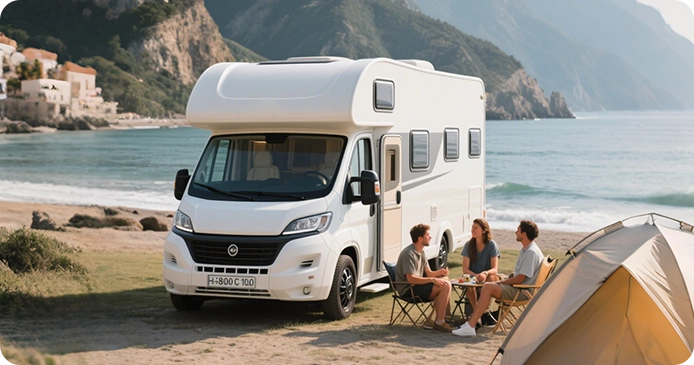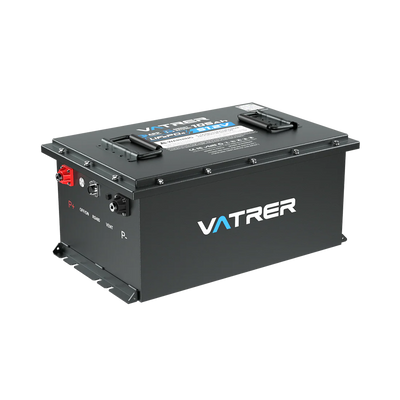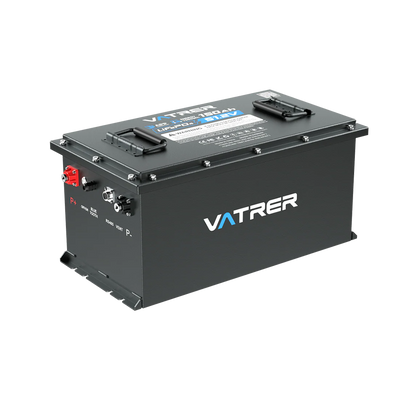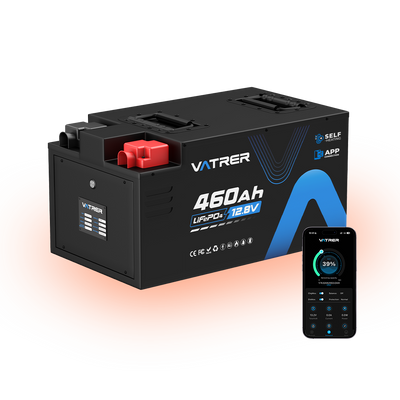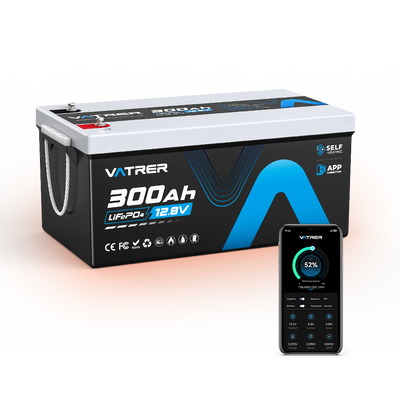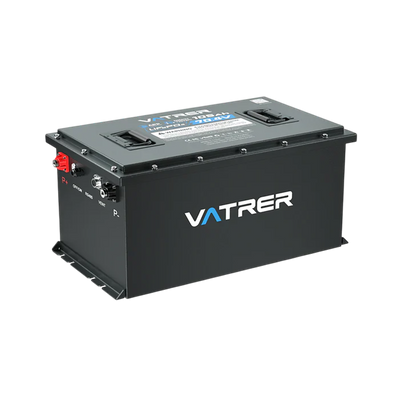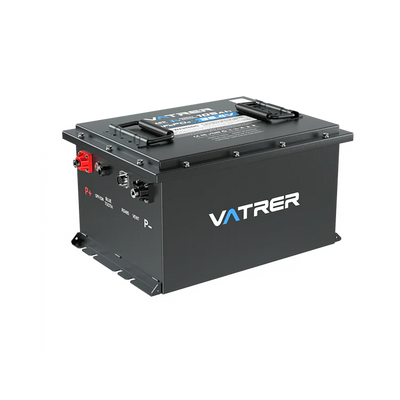
LiFePO4 Battery vs. Lithium-ion Battery: An In-depth Comparison
Selecting the right type of lithium battery for backup power, solar generators, electric vehicles, or portable devices requires understanding their distinct characteristics. LiFePO4 batteries and lithium-ion batteries each offer unique advantages based on priorities like safety, cycle life, or portability. LiFePO4 batteries offer superior safety, a longer lifespan and an eco-friendly design, perfect for solar energy storage and industrial uses. Lithium-ion batteries provide higher energy density and lighter weight, making them more suitable for portable electronic devices and drones.
This article will provide you with a thorough analysis of various aspects, including safety, energy density, weight, temperature range, lifespan, and cost. By the end of this article, you will have a comprehensive understanding of whether LiFePO4 batteries are superior to traditional lithium-ion batteries.
What Is a LiFePO4 Battery?
A LiFePO4 battery, or lithium iron phosphate battery, is a type of lithium battery that uses lithium iron phosphate (LiFePO4) as its cathode material and typically carbon as the anode. Its stable chemistry ensures high thermal and structural reliability, making it safer and more durable compared to traditional lithium-ion batteries. LiFePO4 batteries are widely used in electric vehicles, solar generators, backup power systems, and marine applications due to their longer lifespan (up to 10 years) and eco-friendly design, free of cobalt and other hazardous materials.
What Is a Lithium-Ion Battery?
A lithium-ion battery uses lithium metal oxides, such as nickel, manganese, or cobalt, as cathode materials and graphite as the anode. Known for high energy density, these batteries store significant energy in a compact space, making them ideal for smartphones, laptops, drones, and certain electric vehicles. However, their stability can be lower in extreme conditions, requiring robust battery management systems (BMS) to ensure safety.
LiFePO4 vs. Lithium-ion Batteries: How They Differ
The chemical composition of a battery shapes its performance, safety, and environmental impact.
Although both are widely used, there are still obvious differences between them. Below we will conduct an in-depth comparison from multiple aspects such as safety, energy density, weight, etc. to help you better distinguish and understand the two types of lithium batteries:
Safety
LiFePO4 batteries are widely recognized as safer than lithium-ion batteries. The chemistry of LiFePO4 batteries, with strong covalent bonds between iron, phosphorus, and oxygen atoms in the cathode, enhances their stability and reduces the risk of thermal runaway and overheating issues. In contrast, lithium-ion batteries have a higher risk of battery fires due to their composition and electrolyte materials.
To illustrate this, let's consider an example. Imagine a scenario where a lithium-ion battery is subjected to physical damage or overcharging. The instability of the electrolyte in lithium-ion batteries can lead to thermal runaway, causing the battery to heat up rapidly and potentially catch fire or explode. On the other hand, LiFePO4 batteries have a more stable chemistry, making them less prone to such catastrophic events.
Video: LiFePO4 Drill Test! Will it erupt in flames?
Energy Density
Energy density refers to the amount of energy a battery can store per unit of volume or weight. Lithium-ion batteries typically have a higher energy density (150-220 Wh/kg) than LiFePO4 batteries. Lithium-ion batteries have a higher power-to-weight ratio and can store more energy per unit of volume or weight compared to LiFePO4 batteries.
For example, a lithium-ion battery in an electric vehicle can extend driving range by 10–20% compared to a LiFePO4 battery of the same size, lithium-ion batteries are often preferred due to their higher energy density. LiFePO4 batteries, although slightly lower in energy density, can still provide sufficient power for applications where high energy density is not the primary concern.
Weight
Battery weight impacts suitability for specific applications. The weight of LiFePO4 batteries compared to lithium-ion batteries can vary depending on the specific design and materials used. LiFePO4 batteries are generally heavier due to their lower energy density and iron-based materials. For example, a 100Ah LiFePO4 battery typically weighs 26-33 lbs (12-15 kg), while a comparable lithium-ion battery (NMC) weighs 17-22 lbs (8-10 kg).
When camping outdoors, using lithium-ion batteries can reduce the weight of your backpack by about 20%. In contrast, for RV, marine or industrial use, the 33-pound weight of lithium iron phosphate batteries has little impact on stability or system design, which focuses more on safety and cycle life.
Temperature Range
LiFePO4 batteries offer a wider operating temperature range compared to lithium-ion batteries. They can function reliably in temperatures ranging from -4°F (-20°C) to as high as 140°F (60°C). This broader temperature range makes LiFePO4 batteries suitable for applications in extreme climates, including both hot and cold environments.
In contrast, lithium-ion batteries have a narrower temperature range, typically between 32°F (0°C) and 113°F (45°C). Operating lithium-ion batteries outside this temperature range may result in decreased performance and potential safety hazards.
Charging and Discharging
Charging and discharging characteristics affect usability. LiFePO4 batteries have a nominal voltage of 3.2–3.3V per cell and a charge rate of 1C, typically charging in 3 hours with 95% efficiency. Their flatter voltage curve makes state of charge (SoC) estimation less precise (±10% accuracy), requiring a sophisticated BMS with overvoltage protection for applications like solar generators. For example, in a solar system, a BMS prevents over-discharge during nighttime use, extending cycle life.
Lithium-ion batteries, with a nominal voltage of 3.6–3.7V per cell, offer more precise SoC estimation (±1-2% accuracy) and a charge rate of 0.7–1C, taking 3–3.5 hours with 90% efficiency. Therefore, LiFePO4 batteries support up to 80% depth of discharge (DoD) without significant capacity loss, compared to 50–60% for lithium-ion batteries, making them ideal for backup power.
Lifespan
LiFePO4 batteries have a longer lifespan compared to lithium-ion batteries. LiFePO4 batteries can endure thousands of charge and discharge cycles before experiencing significant performance degradation. This extended lifespan makes LiFePO4 batteries a reliable choice for applications where longevity is essential, such as renewable energy storage systems.
In comparison, lithium-ion batteries typically go through around 500 charge and discharge cycles before their performance starts to degrade. After a certain number of cycles, the capacity of lithium-ion batteries gradually decreases, affecting their ability to hold a charge effectively.
Cost
The cost per watt-hour of LiFePO4 and lithium-ion batteries can vary due to factors such as manufacturing processes, materials used, and market demand. Generally, LiFePO4 batteries may be slightly more expensive than comparable lithium-ion batteries due to the use of different materials and the relatively new nature of LiFePO4 battery chemistry.
However, it is essential to consider the overall value and performance benefits when evaluating the cost aspect. The longer lifespan and enhanced safety features of LiFePO4 batteries can offset their initial higher cost, making them a cost-effective choice in the long run for certain applications.
How to Choose the Right Battery Type
Selecting the right type of lithium battery involves evaluating:
- Capacity: Calculate watt-hours (Wh) based on device needs. For example, a 1000W appliance for 2 hours requires 2000Wh (Working Time = Capacity in Wh × 0.85 / Device Wattage).
- Safety: Prioritize batteries with BMS, including overvoltage and thermal protection, critical for backup power or electric vehicles.
- Lifespan: For long-term use, choose LiFePO4 batteries for their extended cycle life.
- Cost: Balance initial cost with long-term savings, considering replacement and maintenance.
- Other Lithium Types: Compared to lithium-ion batteries like NMC (nickel-manganese-cobalt), LCO (lithium-cobalt-oxide), or LTO (lithium-titanate), LiFePO4 batteries offer better safety but lower energy density. NMC excels in high-power applications, LCO in consumer electronics, and LTO in fast-charging systems.
Conclusion
After a detailed comparison, it is clear that both LiFePO4 batteries and lithium-ion batteries have their own unique advantages and considerations. LiFePO4 batteries excel in terms of safety, wider temperature range, longer lifespan, and overall stability. On the other hand, lithium-ion batteries offer higher energy density and can be lighter in certain cases.
The choice between LiFePO4 batteries and lithium-ion batteries ultimately depends on specific application requirements, budget, and priorities. Evaluating factors such as safety, energy density, weight, temperature range, lifespan, andcost is crucial in making an informed decision. It is recommended to carefully assess these factors and consider real-world examples and use cases to determine which battery technology best suits your needs.
If you're considering replacing your lead-acid batteries, Vatrer's lithium iron phosphate batteries offer up to 4,000 charge and discharge cycles, built-in BMS, and Bluetooth functionality, making them the optimal lithium battery choice for a variety of applications, from solar systems to electric vehicles. Explore the Vatrer battery range now and find reliable, reliable power for your projects.
FAQs
Share







































































